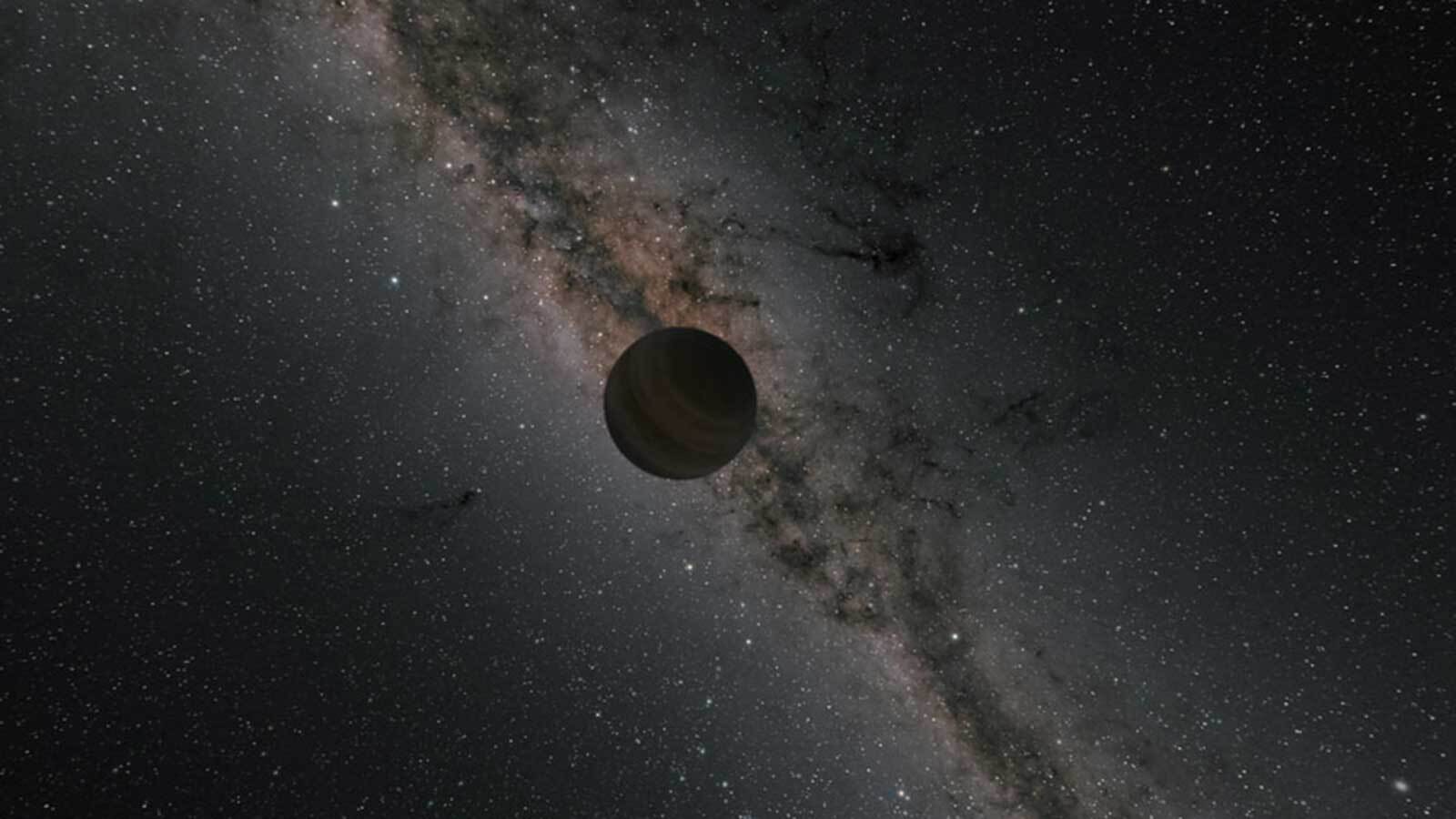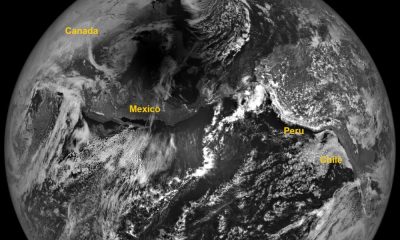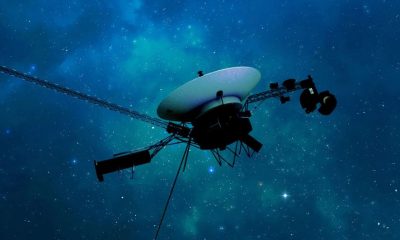News
The Origins of These Rogue Planets

There’s a population of planets that drifts through space untethered to any stars. They’re called rogue planets or free-floating planets (FFPs.) Some FFPs form as loners, never having enjoyed the company of a star. But most are ejected from solar systems somehow, and there are different ways that can happen.
One researcher set out to try to understand the FFP population and how they came to be.
FFPs are also called isolated planetary-mass objects (iPMOs) in scientific literature, but regardless of what name’s being used, they’re the same thing. These planets wander through interstellar space on their own, divorced from any relationship with stars or other planets.
FFPs are mysterious because they’re extremely difficult to detect. But astronomers are getting better at it and are getting better tools for the task. In 2021, astronomers made a determined effort to detect them in Upper Scorpius and Ophiuchus and detected 70 of them, possibly many more.

In broad terms there are two ways FFPs can form. They can form like most planets do, in protoplanetary disks around young stars. These planets form by accretion of dust and gas. Or they can form like stars do by collapsing in a cloud of gas and dust unrelated to a star.
For planets that form around stars and are eventually kicked out, there are different ejection mechanisms. They can be ejected by interactions with their stars in a binary star system, they can be ejected by a stellar flyby, or they can be ejected by planet-planet scattering.
In an effort to understand the FFP population better, one researcher examined ejected FFPs. He simulated rogue planets that result from planet-planet interactions and those that come from binary star systems, where interactions with their binary stars eject them. Could there be a way to tell them apart and better understand how these objects come to be?
A new paper titled “On the properties of free-floating planets originating in circumbinary planetary systems” tackled the problem. The author is Gavin Coleman from the Department of Physics and Astronomy at Queen Mary University of London. The paper will be published in the Monthly Notices of the Royal Astronomical Society.
In his paper, Coleman points out that researchers have explored how FFPs form, but there’s more to do. “Numerous works have explored mechanisms to form such objects but have not yet provided predictions on their distributions that could differentiate between formation mechanisms,” he writes.
Coleman focuses on ejected stars rather than stars that formed as rogues. He avoids rogue planets that are a result of interactions with other planets because planet-planet scattering is not as significant as other types of ejections. “It is worth noting that planet-planet scattering around single stars cannot explain the large number of FFPs seen in observations,” Coleman explains.

Coleman singles out binary star systems and their circumbinary planets in his work. Previous research shows that planets are naturally ejected from circumbinary systems. In his research, Coleman simulated binary star systems and how planets ejected from these systems behave. “We find significant differences between planets ejected through planet-planet interactions and those by the binary stars,” he writes.
Coleman based his simulations on a binary star system named TOI 1338. TOI 1338 has a known circumbinary planet called BEBOP-1. Using a known binary system with a confirmed circumbinary planet provides a solid basis for his simulations. It also allowed him to compare his results with other simulations based on BEBOP-1.
The simulation varied several parameters: the initial disc mass, the binary separation, the strength of the external environment, and the turbulence level in the disc. Those parameters strongly govern the planets that form. Other parameters used only a single value: the combined stellar mass, mass ratio and binary eccentricity. The combined stellar mass of TOI 1338 is about 1.3 solar masses, in line with the average in binary systems of about 1.5 solar masses.
Each simulation ran for 10 million years, long enough for the solar system to take shape.
Coleman found that circumbinary systems produce FFPs efficiently. In the simulations, each binary system ejects an average of between two to seven planets with greater than one Earth mass. For giant planets greater than 100 Earth masses, the number of ejected planets drops to 0.6 planets ejected per system.

The simulations also showed that most planets are ejected from their circumbinary disks between 0.4 to 4 million years after the beginning of the simulation. At this age, the circumbinary disk hasn’t been dissipated and blown away.

The most important result might concern the velocity dispersions of FFPs. “As the planets are ejected from the systems, they retain significant excess velocities, between 8–16 km?1. This is much larger than observed velocity dispersions of stars in local star-forming regions,” Coleman explains. So this means that the velocity dispersions of FFPs can be used to tell ejected ones from ones that formed as loners.
The velocity dispersions provide another window into the FFP population. Coleman’s simulations show that the velocity dispersion of FFPs ejected through interactions with binary stars is about three times larger than the dispersion from planets ejected by planet-planet scattering.

Coleman also found that the level of turbulence in the disk affects planet ejection. The weaker the turbulence is, the more planets are ejected. Turbulence also affects the mass of ejected planets: weaker turbulence ejects less massive planets, where about 96% of ejected planets are less than 100 Earth masses.

Taken together, the simulations provide a way to observe the FFP population and to determine their origins. “Differences in the distributions of FFP masses, their frequencies, and excess velocities can all indicate whether single stars or circumbinary systems are the fundamental birthplace of FFPs,” Coleman writes in his conclusion.
But the author also acknowledges the drawbacks in his simulations and clarifies what the sims don’t tell us.
“However, whilst this work contains numerous simulations and explores a broad parameter space, it does not constitute a full population of forming circumbinary systems,” Coleman writes in his conclusion. According to Coleman, it’s not feasible with current technology to derive a full population of these systems.
“Should such a population be performed in future work, then comparisons between that population and observed populations would give even more valuable insight into the formation of these intriguing objects,” he explains.
There’s still a lot astronomers don’t know about binary systems and how they form and eject planets. For one thing, models of planet formation are constantly being revised and updated with new information.
We also don’t have a strong idea of how many FFPs there are. Some researchers think there could be trillions of them. The upcoming Nancy Grace Roman space telescope will use gravitational lensing to take a census of exoplanets, including a sample of FFPs with masses as small as Mars’.
In future work, Coleman intends to determine if there are chemical composition differences between FFPs. That would constrain the types of stars they form around and where in their protoplanetary disks they formed. That would require spectroscopic studies of FFPs.
But for now, at least, Coleman has developed an incrementally better way to understand FFPs. Using this data, astronomers can begin to discern where individual FFPs came from and to better understand the population at large.
News
Is now the right time to invest in gold as prices have cooled?

The price of gold has climbed to record highs recently and has remained strong through much of April. And, that growth continued until the precious metal traded at around $2,390 per ounce on April 19, 2024. But since, growth in the price of the precious metal has cooled, with gold’s price now hovering around $2,300 per ounce.
This lull in gold’s price may represent an investment opportunity.
In general, investing is centered around buying assets when prices are low and selling them when prices are high – generating a profit on the difference between the two. So, considering the declines in gold’s price over the past few days, now may be the time to make your investment. But is buying gold during this lull in prices really a good idea?
Compare your gold investment options among leading brokers now.
Gold prices have cooled. Should you buy in now?
With gold’s price down from recent highs, you may be wondering if now is the right time to buy in. There are several reasons the dip in gold’s price may represent an opportunity to buy. Here are some of the biggest:
Prices may rise again
If looking at a gold price chart shows anything for certain, it shows that changes in the overall growth of the medal come in fits and spurts. Periods of price growth are typically followed by periods of declines and vice versa.
But with inflation rising in recent months – and with gold’s reputation as a safe-haven asset that can hedge against inflation – it only makes sense that the price of the precious metal will eventually start to head up again in the future. While attempting to time that directional change may be tricky, buying the precious metal while the price is down gives you the opportunity to take advantage of any upward movement that may be ahead.
Add gold to your portfolio now before prices have a chance to rise.
You may be able to make a quick profit
Gold isn’t known as an asset in which you can earn a quick return, but in today’s market, that may be the case. Don’t forget that in January, gold was trading at just $2,000 per ounce. And, by mid-April, the commodity’s price had climbed to around $2,400 per ounce. That’s about 20% growth in a matter of months, much of which happened since March 1 – an impressive climb for any investment asset.
Perhaps more importantly, gold’s price growth through the beginning of 2024 shows that the commodity doesn’t have to be a buy and hold style investment that you keep in a safety deposit box or precious metal depository for years to come. There’s also the possibility that the commodity’s price could climb further ahead, making it a compelling way to potentially generate a quick profit.
There are other benefits of investing in gold
There are other benefits of investing in gold that have little to do with the price growth seen thus far in 2024 – or the lull in prices seen over the past couple of days. Those benefits include:
- Inflation protection: Gold has long been considered an inflation hedge, and for good reason. When inflation drives the prices of consumer goods and services up – and the value of the dollar down – gold’s price tends to rise. So, it could be used to maintain the value of your portfolio during inflationary economic conditions. That’s important in today’s economic environment as stubborn inflation continues to weigh on the value of the dollar.
- Portfolio diversification: Gold’s price doesn’t always move in the same pattern that bonds or stocks do. So, mixing a reasonable amount of gold into your portfolio (up to 10% of your portfolio assets) as a diversifier could protect you from losses should one or more of your traditional portfolio assets fall in value. “If you have less than 5% – 10% of your net worth in commodities & FX (forex), you should absolutely consider adding exposure to gold and other precious metals,” says Vijay Marolia, money manager and managing partner at the wealth management firm, Regal Point Capital.
The bottom line
Gold’s price has fallen from recent highs – which may represent an opportunity to tap into growth ahead. However, gold isn’t simply a “buy while it’s low and sell while it’s a high” kind of investment opportunity. The commodity can also protect your portfolio from the stubborn inflation we’ve seen thus far in 2024 while acting as a diversification tool that could increase your risk-adjusted portfolio returns. So, consider adding gold to your portfolio today while it has the potential to grow in value.
-

 News2 weeks ago
News2 weeks agoJuno discovers massive lava lake on Io
-

 News2 weeks ago
News2 weeks agoKevin McCarthy, former House Speaker, seeks revenge
-

 News2 weeks ago
News2 weeks agoAdditional Perspectives on the 2024 Eclipse: Views from the Moon and Earth’s Orbit
-

 News2 weeks ago
News2 weeks agoPossible Future Colleague of Trump: David Lammy, a Close Associate of Obama
-

 News2 weeks ago
News2 weeks agoKnowing the Magnetic Field of an Exoplanet’s Star is Essential to Determining the True Size of the Exoplanet
-

 News2 weeks ago
News2 weeks agoHouse speaker receives additional request from GOP member to resign or be ousted
-

 Entertainment2 weeks ago
Entertainment2 weeks agoBethenny Frankel reveals that her mother Bernadette Birk passed away from lung cancer
-

 News1 week ago
News1 week agoIs now the right time to invest in gold as prices have cooled?














